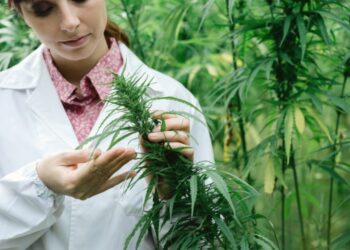Since cannabis legalization in Canada, the market has exploded with options promising everything from better sleep to bursts of creativity. From oils and vapes to edibles and beverages, today’s cannabis consumer is met with a dazzling array of choices—each claiming to deliver a tailored experience based on precise chemical profiles.
Do you want to feel calm or energized? Increase focus or reduce stress? Behind every label is a formula promising to match your mood. But despite the industry’s confident branding, experts warn that the science behind these claims is still taking root.
The secret, many say, lies in the “entourage effect”—a theory that suggests cannabis’s active compounds work together to shape a user’s experience in ways no single ingredient can. Cannabis contains more than 500 chemical compounds, including cannabinoids like THC and CBD, as well as aromatic terpenes such as limonene and myrcene. The prevailing theory is that these molecules interact in complex ways to amplify or balance each other’s effects.
While the concept is scientifically plausible—and appealing to both medical and recreational users—concrete evidence remains limited. “We know that full-spectrum products, which preserve a broader range of the plant’s natural compounds, may offer therapeutic benefits beyond isolates,” says Dr. Jonathan Simone, a biological sciences professor at Brock University. “But we’re still in the early days of understanding how these interactions actually work in humans.”
Much of the existing research is pre-clinical, often involving animal models or cell studies. Clinical studies involving actual cannabis users are rare, and those that exist frequently lack standardized products, making it difficult to draw firm conclusions.
Still, the market marches forward. Retailers frequently train staff—called “budtenders”—to explain terpene profiles to customers, even as scientists caution that individual responses to cannabis remain difficult to predict.
As product menus grow and marketing gets more sophisticated, experts say consumers need to stay curious—and skeptical. “We should celebrate cannabis’s complexity,” Simone says, “but we also need to demand more evidence, not just better branding.”
Until research catches up, finding the right product may remain as much about trial and error as it is about science.
Read the whole article from MarijuanaMoment here.













